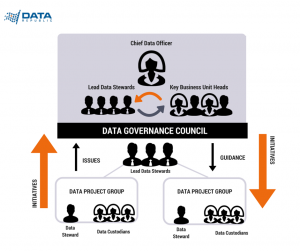Data Governance – What is it?
The shift to the digital economy has seen the volume of data created by consumers and business grow exponentially in the past five years. Indeed, it has been estimated that in the past two years more data has been created than in the entire previous history of the human race.
The staggering potential benefits of data for everything from marketing and customer acquisition through to post-sale servicing and product creation have not gone unnoticed by the broader business community with 75% of companies recently surveyed by Gartner confirming that they have invested or plan to significantly invest in big data in the next years.
So, what are we actually doing with all of this data?
At present, it’s estimated that fewer than 0.5% of all data created is actually analysed and used.
It appears that we’re all very good at planning for the opportunity which data represents but can’t seem to take the leap to begin operationalising data collection, analysis and application.
One of the root causes of this stasis around data use lies with ineffective data governance. Organisations have very efficient processes for the collection, management and governance around money, but the rules surrounding the collection, analysis and use of data in business are still somewhat immature. This immaturity manifests in (amongst other things) lack of controls and mitigants that often leads to an increase in actual and perceived risk. It’s this risk that causes much of the inactivity surrounding the use of big data.
Governance is central to a company’s ability to both maximize the value of their own data and the minimize any risk associated with using it.
In this ebook, we will seek to define and explain the role of governance in data utilisation, as well as provide some best practice tips for the review and development of your own data governance frameworks.
WHAT IS DATA GOVERNANCE?
Definitions of data governance can vary widely in length and complexity. Here are my preferred explanations:
“[Data Governance is] The formal orchestration of people, processes and technology to enable an organization to leverage data as an enterprise asset”.
- The MDM Institute
“Data Governance is the exercise of executive authority over business data. Its intent is to assure accountability across the enterprise for the quality (defined as fitness for intended use) of the mission-critical data belonging to the enterprise.”
- Denis Kosar, SAP
In layman’s terms, data governance refers to the effective collection, analysis and application of data within a business.
Common goals of data governance programmes include:
- To develop and communicate data strategies, policies, procedures and architecture requirements.
- To sponsor and oversee the effective delivery of data projects and strategy outcomes.
- To define and ensure compliance with data policies, standards and procedures.
- To understand and promote the value of data assets.
- To support the analysis and exchange of data insights for the benefit of the business.
WHY IS DATA GOVERNANCE KEY TO DATA UTILISATION?
You’re able to capture what’s important
Data governance facilitates business decision-making around what data should be captured, by whom and how it should then be stored. With no formal approach or mandate to capture and record specific data, businesses can potentially cede their own data assets. Data utilisation is impossible without understanding the lineage of the data via effective capture.
There are clear guidelines around access and use
Often businesses land at extreme ends of the scale when it comes to internal data access and use. Some departments have to fight tooth and nail for access to data which should already be available to them. They waste time in legal and compliance, subsequently sacrificing agility and speed to market.
On the other end of the scale, some businesses are still caught up in the figurative ‘Wild West’ of data compliance where gigabytes of sensitive data are exchanged on individual stakeholder authority via unencrypted USB stick and excel files.
Data governance enables clear guidelines around data access and use to be developed and enforced, allowing business to both manage risk and ensure that data can actually be leveraged to drive insight.
Data is treated as a valid business asset
Far too often data is treated as a by-product or consequence of business activity rather than as an asset which can drive cumulative value for a business if it is effectively captured, analysed and utilized.
Data governance necessitates an ongoing investment in people, systems, technology and time. This investment requires executive level sponsorship and signals an ongoing commitment to treating data as a business asset. Once data is treated as a business asset, its application and use becomes operationalized and more results-driven.
WHO IS RESPONSIBLE FOR DATA GOVERNANCE?
Historically the management and responsibility of data was the remit of the IT department who often worked in isolation focusing on data collection and compliance. With the technological revolution of the workplace and rise of the digital economy however, access and the use of data (whether that be records, documentation or other information), has become critical for various stakeholders and business units to be able to do their jobs.
In larger organisations it can be difficult to identify and meet these information and data requirements. Some stakeholders may be interested in analytics and reporting to inform future decision-making, while others are more focused on risk and compliance and others still may be advocating innovative exchange and analysis of data with partner organisations.
With so many potentially competing requirements for data, it’s critical that the remit for data governance be placed within a dedicated cross-functional team, rather than solely in IT or legal, as this ensures that agility and strategic innovation have a seat at the table with risk avoidance.
Some progressive organisations are solving the diverse challenges and needs of data by investing in such cross-functional teams, often labelled a Data Governance Council.
These councils have enterprise-wide authority over data management and infrastructure development, ensuring that data governance activities align with strategic business goals. As data is increasingly recognized as a business asset, Chief Data Officers are also appearing in the c-suite of major global organisations.
For the majority of businesses however, data utilisation and appropriate governance programmes are still in early development stages. With the broader market conversation shifting over the past 24 months to the value and opportunity which data and big data offers to business and society, the battle for board-time and appropriate investment in resources while hopefully ease for data-inclined stakeholders.
BEST PRACTICE TIPS FOR COMMENCING A DATA GOVERNANCE PROGRAMME
If you’re a stakeholder or business leader experiencing the teething problems associated with in-effective data management, here are my core tips for commencing a data governance programme.
- Gain executive level sponsorship
Like any new business initiative top-down support for data governance is critical, both for funding and broader behavioral change management. Target key decision makers early and communicate the business case for their own division’s investment in data governance clearly.
At this stage it’s important to clearly identify both the opportunities and risks surrounding data quality – the potential to generate and improve revenue outcomes based on customer insight and increased service levels but also the risks associated with losing customers, revenue opportunities and security due to poor (or non-existent) data utilisation and management.
- Gather the right team and define responsibility
As outlined above, it’s important that the data governance council appropriately embodies the diverse data needs and priorities across the business. This mix of business functions effectively breaks down the siloes around data, ensuring that people beyond the legal team are empowered to contribute to decision-making around data.
In addition to bringing together a team with the required skills sets, experience and authority across data, legal, IT, marketing, product and finance, it’s important that each member of the Data Governance Council firmly understands their role and responsibilities.
Each member needs to understand:
- The core objectives, protocols and success measures of the programme
- Who has the right to make what types of decisions and the group process for reaching decisions around data
- Their accountabilities for communication and enacting decisions made by the Data Governance Council
A typical Data Governance Council structure could look like this:

3. Take the time to properly define and document your purpose
Data governance programmes can differ greatly in scope depending on the objectives of the business. Whether you’re undergoing a complete overhaul of data management and control measures or you’re just trying to facilitate simple data sharing projects between business units, it’s important not to bite off more than you can chew.
Typically, the first phase of a data governance programme revolves around establishing the Data Governance Council’s mission, goals, responsibilities and procedural approach. Often this may involve redefining data rules, definitions and control processes which could directly impact the way various teams in your business operate. Don’t underestimate the time and challenges associated with change management, especially if related to a particularly ‘political’ business challenge.
Taking the time to define the purpose and working methodology of the Data Governance Council will put you in good stead once you begin to commence your first projects.
4. Work to a quantifiable business case
The long-term benefits of a well-established and resourced data governance programme should be clear to any business leader worth their salt, however justifying funding for this type of activity is still be a challenge for many.
In my experience, it’s best to work to quantify and establish the clear monetary value associated with data governance projects. How much revenue could be generated via the personalized marketing activity made possible by combining two previously separate data sets? What is the clear cost associated with data duplication, ineffective security or other?
Build a clear business case for projects and prioritise some tactical ‘quick wins’ to ensure momentum and ongoing support. Reporting on data governance activity and outcomes is critical at both a project and programme level.
As your programme matures, incentivising participation and ensuring consistent communication on positive data governance outcomes for both business leaders and those on the front-lines can ensure that data governance becomes an established discipline within enterprise management.
CONCLUDING THOUGHTS
Data governance is a complex and evolving issue for businesses as they complete the transition to the new hyper-connected digital economy.
As the role and value of data to business continues to expand, it will be those organisations who have made clear commitment and investment to their data infrastructure and governance who stand best placed to seize the incredible productivity opportunities which data and big data innovation presents.
In these times, it’s govern or risk being left behind.
About the author
Paul McCarney is the Co-Founder and CEO of Data Republic an innovative Australian data exchange startup. Data Republic provides a trust framework and platform for companies to exchange data in a secure and governed environment.
In addition to Data Republic, Paul is also a Non-Executive Director for Trade Me (TME.AX) and Cirrus Media (formerly Reed Business Information), and previously a NED at iiNet (IIN/AX). For the past 15 years Paul has been an active entrepreneur, investor and leader in the data, digital asset strategy and tech innovation space.
